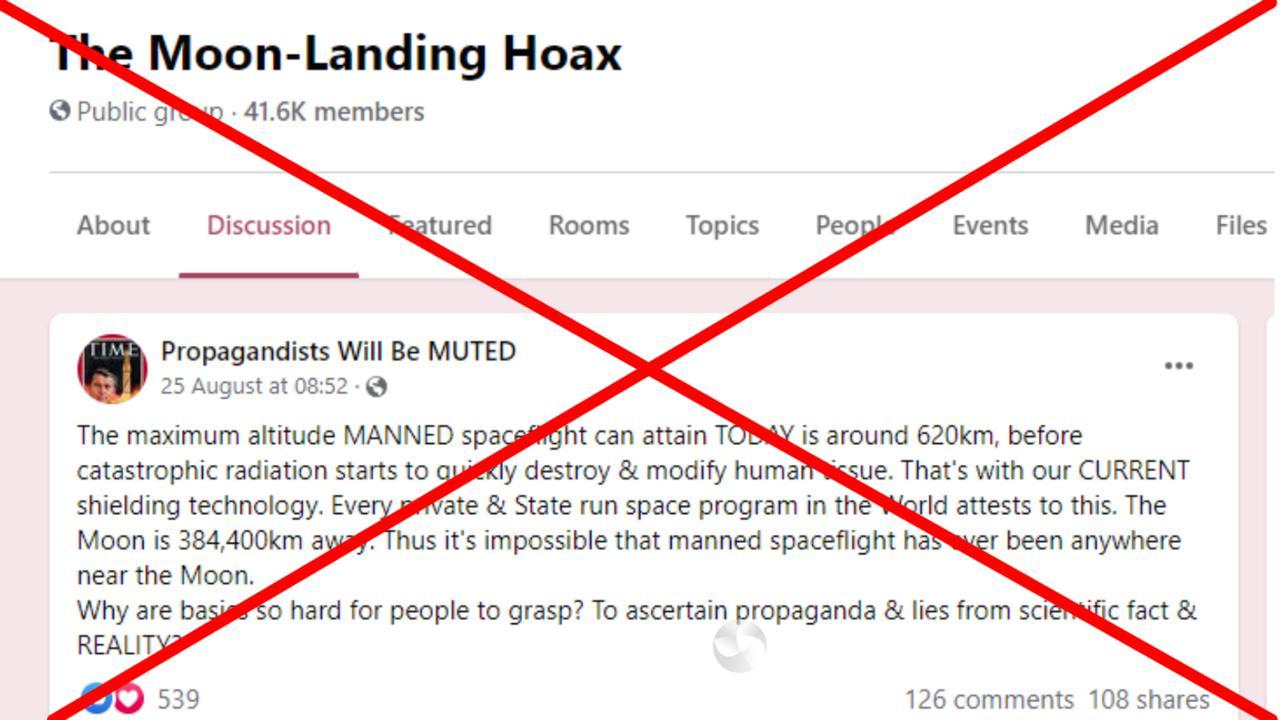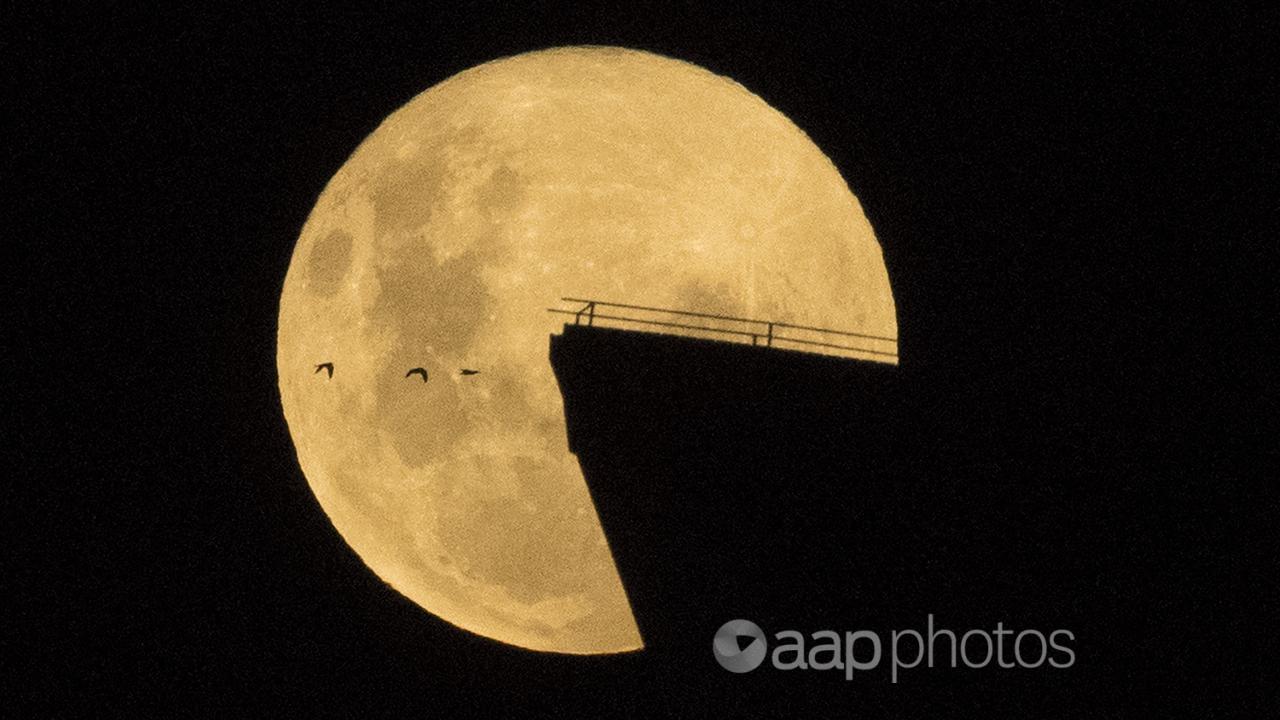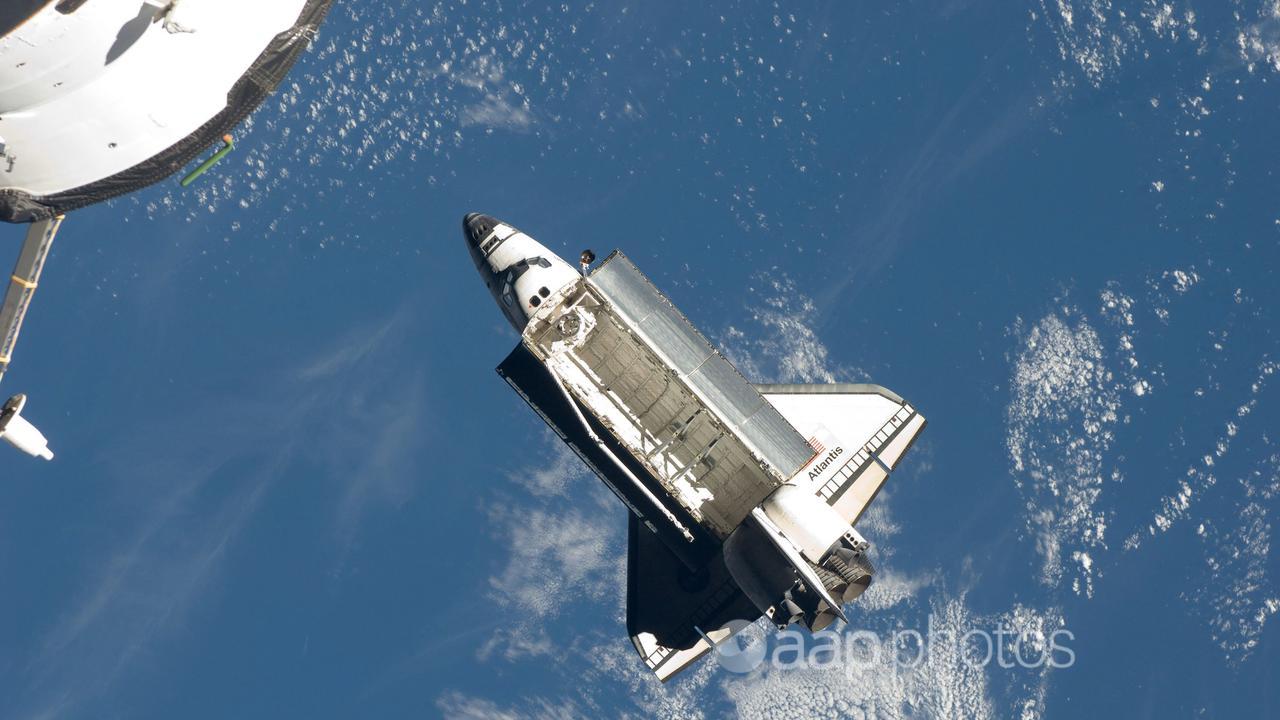A Facebook user says the moon landing was impossible because the highest altitude a crewed spaceflight can safely reach is 620 kilometres.
The claim is false. The maximum altitude recorded by a crewed spacecraft is 400,171km during a lunar mission in 1970.
The post, shared to a moon landing conspiracy group, reads: “The maximum altitude MANNED spaceflight can attain TODAY is around 620km, before catastrophic radiation starts to quickly destroy & modify human tissue. That’s with our CURRENT shielding technology. Every private & State run space program in the World attests to this. The Moon is 384,400km away. Thus it’s impossible that manned spaceflight has ever been anywhere near the Moon.”

In the post’s comments, the user shares a link to a webpage which they say is the source of the 620km figure.
However, the webpage discusses the most distant point from earth a space shuttle has reached. The Space Shuttle Discovery achieved a maximum altitude of 620km during a 1997 mission to re-boost the orbit of the Hubble Space Telescope.
Discovery was one of six shuttles NASA used to carry astronauts and cargo such as satellites, space station parts or scientific instruments between 1981 and 2011.
Brad Tucker, an astrophysicist and cosmologist at the Australian National University, confirmed the post’s figure refers to the maximum altitude of a space shuttle, “a specific craft design”.
“The Space Shuttle did reach 620km during Hubble Service Mission 2 – when it was sent to fix Hubble,” Dr Tucker told AAP FactCheck in an email.
While 620km is the highest altitude a shuttle reached, experts say other crewed space flights have reached vastly higher altitudes, including landing on the moon.
Alice Gorman, an expert in space archaeology at Flinders University’s College of Humanities, Arts and Social Sciences, told AAP FactCheck the claim was incorrect.
“In the Apollo missions, while two of the crew members descended to the lunar surface, one astronaut remained in the command module which orbited the Moon,” Dr Gorman said in an email.
“On the far side of the Moon, they were the furthest humans have ever been from Earth.”
Dr Gorman said a distance of 400,171km from earth was achieved during the Apollo 13 mission in 1970.
NASA told AAP FactCheck that Apollo 13 holds the distance record for a human-capable spacecraft and added there is a significant amount of evidence to show astronauts landed on the moon.
“We collected 842 pounds (382kg) of Moon rocks that have been studied by scientists worldwide for decades,” a spokeswoman said in an email.
“You can still bounce Earth-based lasers off the retroreflector mirrors placed on the lunar surface by the Apollo astronauts.”
The spokeswoman also pointed to images of the Apollo landing sites taken by NASA’s Lunar Reconnaissance Orbiter in 2011.
Alan Duffy, director of the Space Technology and Industry Institute at Swinburne University of Technology, agreed that “furthest from the ground would be the Apollo missions that went to the moon”.
Professor Duffy said the highest altitude reached by a spacecraft still in the low earth orbit was 1400 km by the Gemini XI, one of the precursor missions to Apollo.

The post also suggests crewed space flights can’t travel further than 620km due to the impact of radiation.
Experts say astronauts are exposed to radiation in space including below 620km, but the exposure level would not “destroy and modify human tissue”.
“The post is claiming that the atmosphere protects human bodies from radiation,” Dr Gorman said.
“This is not strictly true, as radiation exposure is obviously a big concern for (the International Space Station).”
However, spacecraft offer protection from radiation through aluminium sheets, nets made of Kevlar and epoxy material, and air gaps to slow down radiation particles.
Dr Tucker says radiation is also dependent on the length of exposure.
“The Apollo missions were designed to fly relatively quickly … to limit radiation exposure,” he said.
AAP FactCheck has previously debunked claims Buzz Aldrin admitted there was no moon landing.
The Verdict
The claim 620 kilometres is the maximum altitude possible for a crewed spaceflight is false. There are numerous examples of crewed spacecraft reaching higher altitudes, including the Apollo 13 mission which holds the record for the furthest distance from earth at 400,171km, experts told AAP FactCheck.
False – The claim is inaccurate.
* AAP FactCheck is an accredited member of the International Fact-Checking Network. To keep up with our latest fact checks, follow us on Facebook, Twitter and Instagram.
All information, text and images included on the AAP Websites is for personal use only and may not be re-written, copied, re-sold or re-distributed, framed, linked, shared onto social media or otherwise used whether for compensation of any kind or not, unless you have the prior written permission of AAP. For more information, please refer to our standard terms and conditions.


















